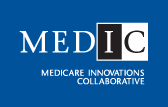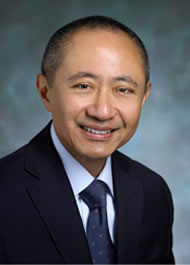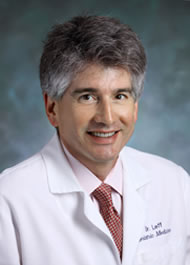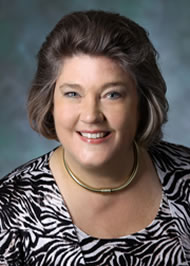 At the recent American Geriatrics Society (AGS) annual conference in Maryland, I had the pleasure of attending a MedIC (Medicare Innovations Collaborative) meeting. MedIC was founded to influence health care practices and policy by helping health systems test and implement evidence-based programs that improve the health of hospitalized older adults, such as NICHE, ACE, and HELP, among others. The six collaborating health systems, Geisinger Health System, Carolinas Medical Center-Mercy, Crouse Hospital, Lehigh Valley Health Network, Aurora Sinai Medical Center, and University Hospitals Case Medical Center serve as laboratories for new approaches to caring for older adults and as beacons of best practices for the rest of the field. Progress in MedIC’s first year was excellent, and the excitement among MedIC leaders and site representatives at the meeting was palpable.
At the recent American Geriatrics Society (AGS) annual conference in Maryland, I had the pleasure of attending a MedIC (Medicare Innovations Collaborative) meeting. MedIC was founded to influence health care practices and policy by helping health systems test and implement evidence-based programs that improve the health of hospitalized older adults, such as NICHE, ACE, and HELP, among others. The six collaborating health systems, Geisinger Health System, Carolinas Medical Center-Mercy, Crouse Hospital, Lehigh Valley Health Network, Aurora Sinai Medical Center, and University Hospitals Case Medical Center serve as laboratories for new approaches to caring for older adults and as beacons of best practices for the rest of the field. Progress in MedIC’s first year was excellent, and the excitement among MedIC leaders and site representatives at the meeting was palpable.
MedIC’s progress is even more remarkable when you learn that it originally was Plan B in an effort to improve hospitals’ care of older adults. In 2005, shortly after I arrived at The Atlantic Philanthropies, Diane Meier of the Center to Advance Palliative Care came down to our offices on 42nd across from Grand Central Station to present her idea of a Center to Advance Geriatric Care, intended to do for models of geriatric care what she had done for palliative care. Laura Robbins, then head of Atlantic's US Ageing Programme, and I were very intrigued. If it were possible to replicate the success of CAPC in geriatric care, it would go a long way to fulfilling our goals for changing the practice of care for older adults. At that point CAPC had reached over 600 hospitals where inpatient palliative care services had been adopted, a very large share of the hospitals over 200 beds. Leaders in the field of geriatrics such as Bill Hall, David Reuben, and Rosanne Leipzig were in the room as well and endorsed the concept.
 By the end of 2006, we had been able to convene several meetings of experts and stakeholders to get their buy-in and then make an initial planning grant. After several changes to the line-up, a dream team of leaders assumed the helm: Al Siu, the chair of Mount Sinai's Department of Geriatrics; Bruce Leff, of Johns Hopkins and the long-time leader of the Hospital at Home movement for the Hartford Foundation; and Lynn Spragens, the health care business consultant critical to CAPC's success as well as Atlantic's capacity-building grant for NICHE.
By the end of 2006, we had been able to convene several meetings of experts and stakeholders to get their buy-in and then make an initial planning grant. After several changes to the line-up, a dream team of leaders assumed the helm: Al Siu, the chair of Mount Sinai's Department of Geriatrics; Bruce Leff, of Johns Hopkins and the long-time leader of the Hospital at Home movement for the Hartford Foundation; and Lynn Spragens, the health care business consultant critical to CAPC's success as well as Atlantic's capacity-building grant for NICHE.
 The response from the field was generally positive, and shortly after I left to return to JAHF, my colleagues at Atlantic took the next step of a larger ($800,000) grant to create dissemination materials, tools, and business case frameworks to support the adoption of models of improved geriatric care. Al, Bruce, and Lynn, along with Sean Morrison and Sharon Inouye, published the concept and the findings of their environmental scan in Health Affairs early in 2009 as "The Ironic Business Case For Chronic Care in The Acute Care Setting." They argued that while most hospitals tend to sneer at geriatric cases as low margin and low prestige, there is a financial and social benefit to improved chronic care even within the acute care environment.
The response from the field was generally positive, and shortly after I left to return to JAHF, my colleagues at Atlantic took the next step of a larger ($800,000) grant to create dissemination materials, tools, and business case frameworks to support the adoption of models of improved geriatric care. Al, Bruce, and Lynn, along with Sean Morrison and Sharon Inouye, published the concept and the findings of their environmental scan in Health Affairs early in 2009 as "The Ironic Business Case For Chronic Care in The Acute Care Setting." They argued that while most hospitals tend to sneer at geriatric cases as low margin and low prestige, there is a financial and social benefit to improved chronic care even within the acute care environment.
 Unfortunately, in 2008 and 2009 Atlantic was already changing its direction. The large implementation project, ball-parked at around $20 million over 10 years, was suddenly off the table. (For comparison, setting up and funding the first 10 years of CAPC required over $50 million from The Robert Wood Johnson Foundation.) On the fly, Al, Bruce, and Lynn made the best strategic reconceptualization of a project I have ever seen. Realizing the futility of setting up the infrastructure of a consulting business that would never get the actual capital to serve clients, they decided to dive right in to creating a "politically resonant" Medicare Innovations Collaborative. This is all the more remarkable in that they started before the Center for Medicare and Medicaid Innovations was named and before Don Berwick was appointed administrator of CMS, making collaboratives the instant flavor of the month.
Unfortunately, in 2008 and 2009 Atlantic was already changing its direction. The large implementation project, ball-parked at around $20 million over 10 years, was suddenly off the table. (For comparison, setting up and funding the first 10 years of CAPC required over $50 million from The Robert Wood Johnson Foundation.) On the fly, Al, Bruce, and Lynn made the best strategic reconceptualization of a project I have ever seen. Realizing the futility of setting up the infrastructure of a consulting business that would never get the actual capital to serve clients, they decided to dive right in to creating a "politically resonant" Medicare Innovations Collaborative. This is all the more remarkable in that they started before the Center for Medicare and Medicaid Innovations was named and before Don Berwick was appointed administrator of CMS, making collaboratives the instant flavor of the month.
After a short call for proposals (with no cash award attached!), MedIC attracted some nationally leading health systems to participate in the collaborative and each adopt at least one practice improvement model. Geriatric care champions from these systems have also participated in other projects such as the Atlantic-Hartford co-funded Practice Change Fellows program. If CMS or other players want to see what a living laboratory for the most complex and expensive patients might look like, they don't have to look any further than MedIC. If they want to find visionary leaders, they don't have to look any further than Al, Bruce, and Lynn. Some of the results of the collaborative are available here and also in the recent Health Affairs special issue on innovations.
Usually I am skeptical when people talk about turning lemons into lemonade--I just want to know what happened to the oranges I was expecting and why they didn't arrive. But in this case, I think a refreshing glass of lemonade may be just what we need.
